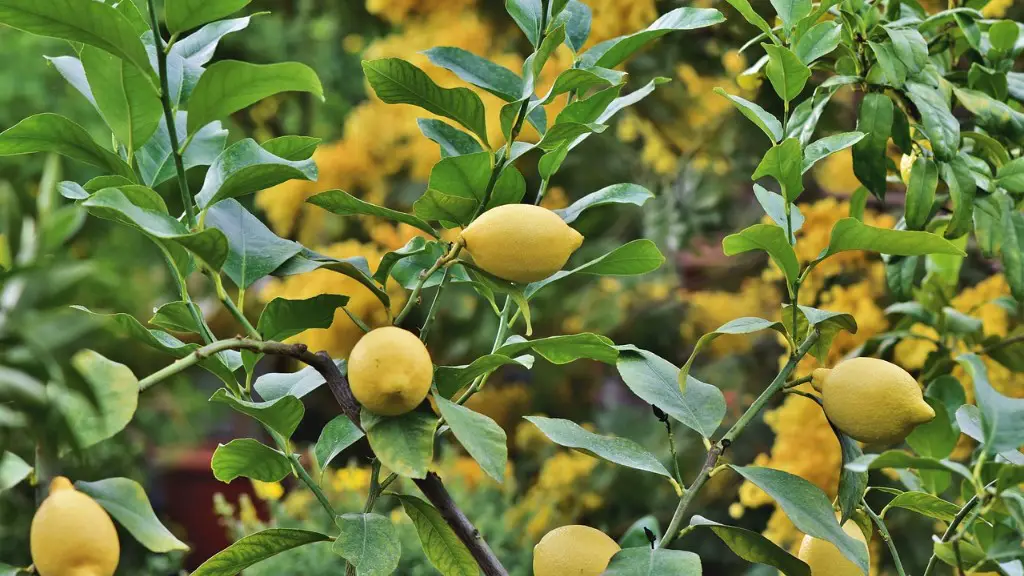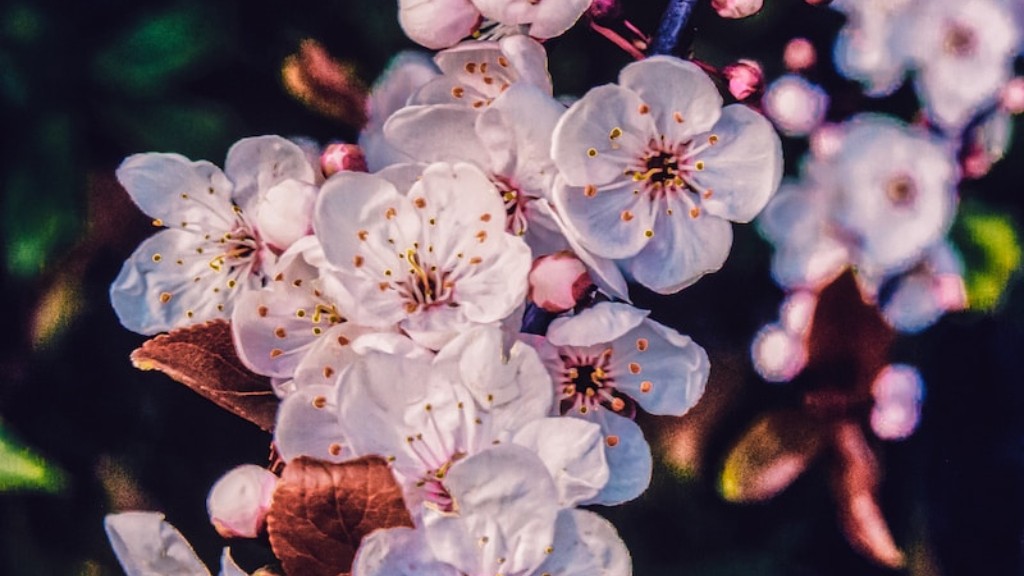The yellowing of the leaves on your lemon tree may be caused by several factors. Firstly, the tree may be affected by a nutrient deficiency, such as nitrogen or calcium, since leaves can turn yellow due to this. Secondly, it could be an environmental factor, such as temperature or humidity issues. Thirdly, it could be the result of an infestation of pests, pathogens or bacteria. Fourthly, the plant may be suffering from over-watering or lack of water. Fifthly, the tree may not be getting enough direct sunlight, as this can cause yellow leaves. Sixthly, it could be due to a lack of proper soil pH levels, or a lack of adequate nitrogen levels, causing nutrient deprivation in the tree. Lastly, it could simply be a natural process of the tree’s life cycle, as the tree may be growing old or reaching the end of its life cycle.
Nutrient Deficiency
Nutrient deficiency can cause yellow leaves on a lemon tree, because plants need nutrients to remain healthy. Nitrogen, calcium, and magnesium are the most important, as they’re essential for maintaining normal cell development, for a balanced growth and for the plants’ overall health. When the soil is lacking in one or more of these essential nutrients, the leaves may turn yellow.
In order to determine if the yellowing of your lemon tree is caused by a lack of nutrients, you should have your soil tested. If the test reveals a nutrient deficiency, you can use fertilizers that contain the necessary amounts of nitrogen, calcium and magnesium to help your tree to regain its green colour.
You should also pay attention to the pH levels of your soil, as too much or too little nitrogen in your soil can cause yellowing of the leaves, since too much nitrogen acidifies the soil and prevents the absorption of calcium and magnesium.
Environmental Factors
Environmental factors can also be a cause of yellow leaves on a lemon tree. If the temperature is too high or too low, the leaves may turn yellow, since plants can’t tolerate extreme temperatures. In addition, too much humidity or a lack of humidity can cause the leaves to yellow, as can too much or too little light exposure.
If you think your tree may be affected by temperatures, you should monitor the temperatures in the area and make sure that they remain constant. In addition, you should try to maintain the humidity level as close as possible to what the plant requires. Finally, make sure that your lemon tree receives enough direct sunlight every day.
Pest Infestations
Pests, pathogens or bacteria can also cause yellow leaves on a lemon tree. Aphids, mites and scales are all common pests that can affect the health of your tree. If the tree is affected by a pest infestation, you may notice that the leaves have spots or areas of discolouration, they may show signs of curling or they may have unhealthy streaks running through them.
In order to prevent an infestation of pests, you should regularly inspect the tree for any signs of infestation. If you see any signs of infestation, you should treat the tree with an appropriate insecticide as quickly as possible. In addition, you should also try to keep the tree as healthy as possible, by providing it with the necessary nutrients and making sure that it is not exposed to too much or too little light, water or temperature.
Overwatering and Lack of Water
If the lemon tree does not receive the correct amount of water, the leaves may start to yellow. If the tree is watered too often, it may suffer from a nutrient deficiency as the excess water will flush away the vital nutrients and wash away the soil. On the other hand, if the tree does not receive enough water, it will become stressed, which can also cause yellow leaves.
In order to determine if the problem is caused by too much or too little water, you should examine the soil around the tree. If the soil is wet, it may indicate that the tree is being watered too often. On the other hand, if the soil is dry, then the tree may not be receiving enough water. If the problem is caused by too much or too little water, it can be easily rectified by adjusting the amount of water accordingly.
Direct Sunlight
Lemon trees need plenty of direct sunlight in order to remain healthy and green. If the tree does not receive enough direct sunlight, the leaves may start to yellow. The optimal amount of sunlight for a lemon tree varies depending on the variety, but it should be between 6 and 8 hours of direct sunlight per day.
If you think that your lemon tree is not receiving enough sunlight, you should try to adjust the position of the tree in order to increase the amount of sunlight it receives. If this is not possible, you should consider providing the tree with artificial light in order to supplement the natural sunlight.
Soil pH Levels and Nitrogen Levels
The pH levels of the soil and the nitrogen levels of the soil can also cause yellow leaves on a lemon tree. If the soil pH levels are too high or too low, the tree may not be able to absorb the necessary nutrients, which can lead to the yellowing of the leaves. In addition, if the nitrogen levels are too low, there will be a nutrient deficiency in the soil, which can also result in yellow leaves.
If you think that the soil pH levels may be causing the yellowing of the leaves on your lemon tree, you should have the soil tested and make sure that the levels are within the optimal range. For nitrogen levels, you should apply a nitrogen-rich fertilizer to your soil in order to ensure that the tree has the necessary levels of nitrogen.
Natural Process
In some cases, the yellowing of leaves on a lemon tree may be caused by a natural process of the tree’s life cycle. As the tree grows old, or reaches the end of its life cycle, the leaves may start to turn yellow as a sign of ageing. This is a normal process and there is nothing that you can do to prevent it.
If you think that the yellowing of the leaves on your lemon tree is due to this natural process, then you should not be worried. Instead, you should make sure that your tree is receiving adequate amounts of water, nutrients, light and other necessary factors for its health.
Conclusion
The yellowing of the leaves on your lemon tree may be caused by several factors, such as nutrient deficiency, environmental factors, pest infestations, overwatering or lack of water, insufficient sunlight or inadequate soil pH or nitrogen levels. It could also be a natural process of the tree’s life cycle. In order to determine the cause of this problem, you should closely observe the tree and inspect it for signs of nutrient deficiencies or infestations. If necessary, you can also test the soil to make sure that all of the necessary nutrients are present and that the pH levels are within the optimal range. In the end, whatever the cause, you should make sure that your tree is always healthy and getting all of the necessary care it needs.



